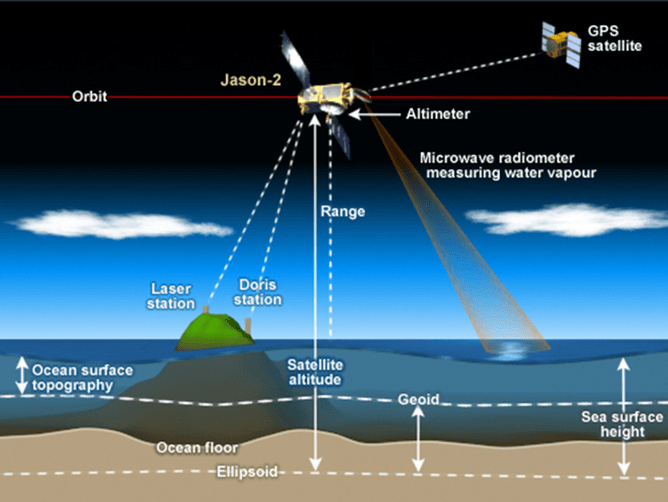-
The photo shows the Bayside Picnic Area, USA, after Hurricane Sandy. Photo credit: NPS (cc)
-
By Christopher Watson, University of Tasmania; John Church, CSIRO, and Matt King, University of Tasmania.
This article was originally published on The Conversation. Read the original article.
Christopher Watson is Senior Lecturer, Surveying and Spatial Sciences, School of Land and Food at University of Tasmania.
John Church is CSIRO Fellow at CSIRO.
Matt King is Professor, Surveying & Spatial Sciences, School of Land and Food at University of Tasmania.
Many observations have shown that sea level rose steadily over the 20th century – and at a faster rate than over the previous centuries. It is also clear from both satellite and coastal observations that seas have risen faster over the past two decades than they did for the bulk of the 20th century.
More recently, several studies have shown that the flow of ice and water into the oceans from Greenland and West Antarctica has increased since 1993. This raises an interesting question: has the rate of sea-level rise changed since 1993, when satellite observations began to give us a more complete picture of the global oceans?
Our new research tackles this question by comparing satellite observations of sea level with those measured at the coast by tide gauges. We use this comparison to determine small biases in the satellite data that have changed over time. Understanding how the land supporting the tide gauges is moving becomes an important part of these comparisons. We found three important results.
First, the seas really have risen faster since 1993, relative to the slower rate over previous decades as evident in the tide gauge data.
Second, comparison of the coastal and satellite measurements reveal small differences in the early part of the satellite record from 1993 to 1999. After allowing for land motion at the tide gauges, the first six years of the satellite record marginally overestimates the sea-level trend. Our revised estimate of global mean sea-level rise for the satellite era (1993 to mid-2014) is about 2.6-2.9 mm per year (the exact value depends on how we estimate land motion) – slightly less than the previous estimate of 3.2 mm per year.

Satellite altimeters measure sea level by measuring the time it takes a radar pulse to make a round-trip from the satellite to the sea surface and back. NOAA/STAR
Third, previous estimates of the rate of rise from satellite data that didn’t incorporate the careful comparison with coastal sea-level measurements, as we have done in our recent study, showed a slower rate of rise over the past decade relative to the one before. Our revised record is clearly different and suggests that the rate of rise has increased, consistent with other observations of the increased contributions of water and ice from Greenland and West Antarctica.
However, sea level varies from year to year, as water is exchanged between the land and oceans (for example during the Australian floods associated with the 2010-11 and 2011-12 La Niña events), and as a result the observed increase in the rate of rise over the short satellite record is not yet statistically significant.
Strikingly, our estimate of the increase in the rate of rise is consistent with the projections of future sea level published by the Intergovernmental Panel on Climate Change (IPCC). Currently, these projections forecast a rise of up to 98 cm by 2100 if greenhouse gas emissions are allowed to continue unabated (and even more if parts of the Antarctic ice sheet collapse). If the world makes strong cuts to greenhouse gas emissions, the rise by 2100 is projected to be significantly less, somewhere between 28 cm and 61 cm.
Coping with the impacts
The increasing rate of sea-level rise is not good news for our coastal population, nor for the natural and built environment in the coastal zone. The world is currently not on track to achieve the lower range of projected sea-level rise. And of course, sea-level rise will not stop in 2100 – as in the current century, the magnitude of future sea-level rise will be linked to our greenhouse gas emissions.
Increasing rates of sea-level rise will place increasing stress on the coastal margin. Extreme sea level events will become more frequent. Inundation and erosion will affect our infrastructure, affect ecosystems and, in some regions, displace populations. Adaption in the coastal zone will occur – this adaption can be either planned or forced upon us by the natural environment. Information on regional sea level changes and their projections are needed to underpin adaptation and mitigation strategies.
It is important that agencies in Australia and worldwide consider the impact of accelerating sea levels and provide communities with advice and planning directions that are commensurate with the magnitude of the problem. Failure to consider these issues will mean painful and costly impacts, particularly during extreme events.
Continued monitoring of sea level is essential
Despite progress, our understanding of sea-level change is incomplete, particularly when it comes to forecasting contributions from the ice sheets. Currently, observed sea-level rise is consistent with the most recent projections. Continuing to know where sea level is tracking relative to projections is important for planning and early warning of any rate of rise that differs from current projections is vital.
Australia relies on other countries for launching and maintaining satellite missions such as those used in our study. We provide an important contribution to the long-term monitoring of altimeter data that spans several different missions and space agencies – this is why long-term government support via Australia’s Integrated Marine Observing System is so valued.


Recommended Comments
Join the conversation
You can post now and register later. If you have an account, sign in now to post with your account.